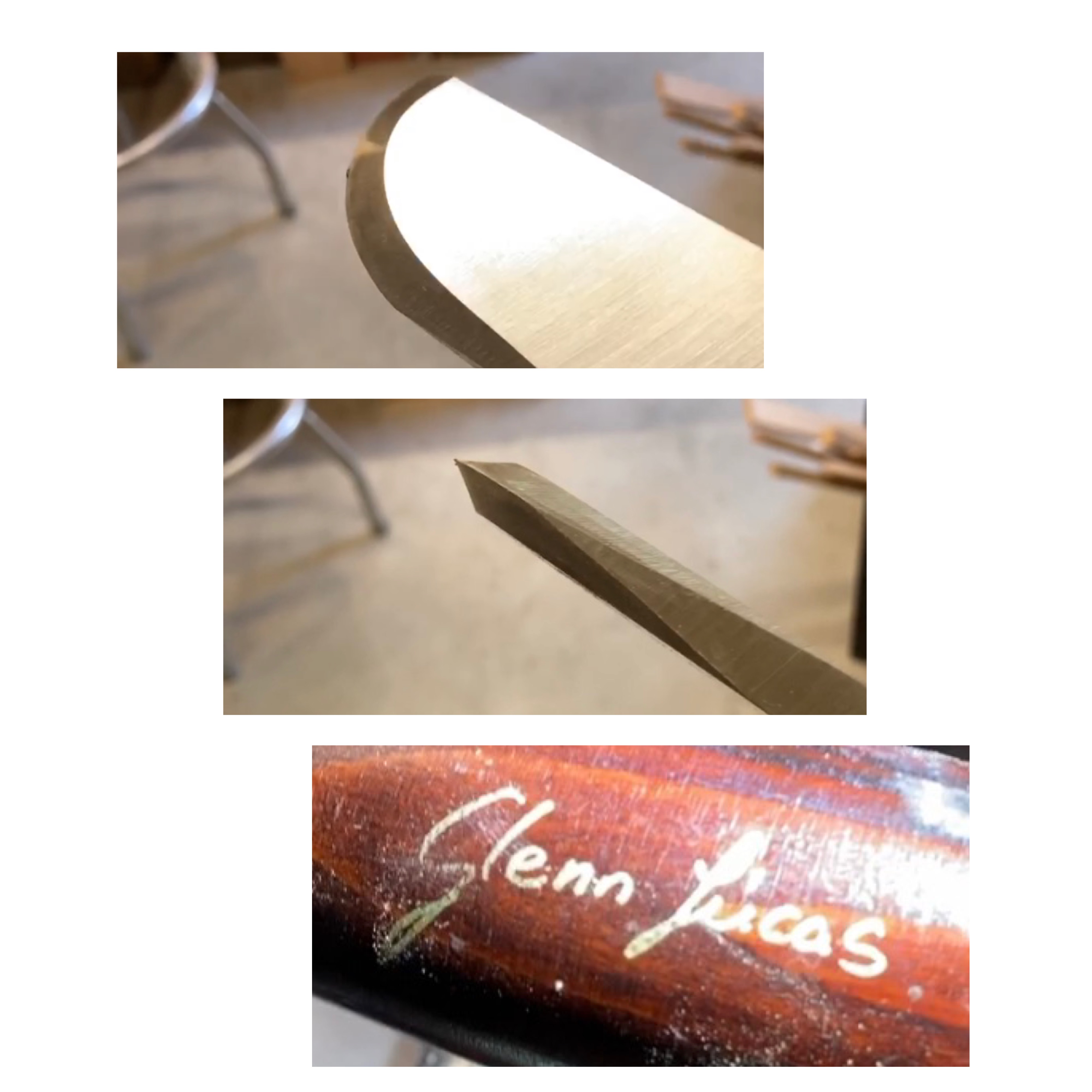Sanding Segmented Work
December 13, 2020
I'm asked quite often, "How do you sand your work?" I don't have a complicated process, but one that works for me. The common troublemaker in any project is getting in a hurry. So...take your time and do it right!! My techniques have evolved, I'm sure like yours, over time. One constant theme in how I approach sanding is something I do BEFORE I start sanding. That "something" is scraping. After I'm happy with the shape and feel of the piece, I grab my very sharp negative rake scraper (pictured below) and spend some time refining the surface. My grinder is nearby (literally five feet away!) from my lathe, and I make use of it many times while working on a piece. Often I'll leave my lathe running and turn around and put a fresh edge on my lathe tools (takes about 20 seconds) and then return to keep up the scraping. Scraping in this way virtually eliminates sanding with grits below 220.

After the surface is free from defects, micro tear-outs, etc., I start the sanding. Remember to turn on your overhead filtering to help keep the fine dust to a minimum. I don't power sand...usually. I have 2" and 3" drill-mounted Velcro sanding heads and various grits of Velcro sanding paper available, but I've had to start over more times than I care to remember when sanding this way; too many scratch marks and "checking" lines that happen because of several factors like the speed being too high or the sandpaper getting clogged. Because of this, I choose to sand by hand. I like to feel the piece as I sand.
I buy quality 8.5" x 11" sheets of sandpaper in grits ranging from 150 to 600, and then, as needed, cut them into 1" strips, folding them usually in thirds, and begin sanding. Generally, I slow the lathe to 100 RPM or so as I sand.
My flexible compressor line is within reach and is invaluable in the sanding process. After every grit, I blow off the piece to remove all trapped fine dust in the grain. Then I move on to the next grit. When using exotics like Padauk, Purpleheart, mixed with lighter toned wood like Maple and most Cherry, it's important to clear the grain before finishing, and the compressed air is just the thing!
After all the sanding is done, I blow off all the surfaces around my lathe, continuing to run the overhead filter, and prepare the work area for applying the finish.
As I said earlier, take your time and do it right! I hope something I've said here helps you in some way with your sanding techniques.
